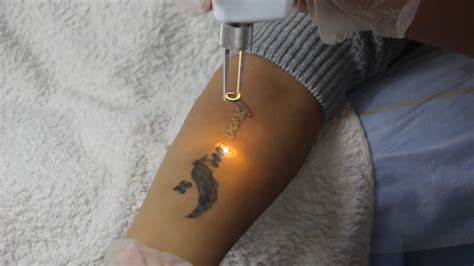If you’re considering laser tattoo removal coventry, understanding the different techniques and options available can significantly impact your experience and results. Each tattoo is unique, and so are the methods for removing them. This guide will help you navigate the various laser tattoo removal techniques available in Coventry, ensuring you make an informed choice.
Understanding Laser Tattoo Removal
Laser tattoo removal works by using focused light beams to break down the ink particles in a tattoo. The body’s immune system then gradually absorbs these fragmented particles. Different lasers and techniques can be used depending on the tattoo’s characteristics, such as color, size, and depth.
Common Laser Techniques
1. Q-Switched Lasers
Overview: Q-switched lasers are the most common choice for tattoo removal. They emit short bursts of high-intensity light, targeting specific ink colors without damaging the surrounding skin.
Pros:
- Effective for a wide range of ink colors, especially black and darker shades.
- Minimal damage to surrounding tissue.
- Quick treatment sessions.
Cons:
- May require multiple sessions for complete removal, especially for complex colors.
2. Picosecond Lasers
Overview: A newer technology, picosecond lasers operate at even shorter pulse durations than Q-switched lasers. This allows for quicker and more efficient ink fragmentation.
Pros:
- Faster treatment times and potentially fewer sessions required.
- More effective on stubborn colors, such as green and blue.
- Less discomfort reported by patients.
Cons:
- Typically more expensive than traditional Q-switched lasers.
- Availability may be limited in some clinics.
3. Fractional Laser Resurfacing
Overview: Fractional lasers work differently from traditional laser removal techniques. They create microscopic treatment zones in the skin, promoting the body’s healing response and fading the tattoo.
Pros:
- Can also improve skin texture and tone in addition to tattoo removal.
- Suitable for those with light tattoos or tattoos that are not too deeply embedded.
Cons:
- May require more recovery time compared to Q-switched or picosecond lasers.
- Not ideal for all tattoo types.
Considerations When Choosing a Technique
- Tattoo Characteristics: The size, color, and depth of the ink can influence which laser is most effective. A consultation with a qualified practitioner can help determine the best option for your specific tattoo.
- Skin Type: Your skin type and color can affect how the laser interacts with the tattoo ink. Some lasers are better suited for certain skin tones.
- Budget: Different techniques come with varying costs. Picosecond lasers may be more effective but could also be more expensive. Ensure you discuss pricing during your consultation.
- Number of Sessions: Some techniques may require fewer sessions than others. If you’re looking for a quicker solution, discuss this aspect with your practitioner.
- Comfort and Recovery: Different techniques may involve varying levels of discomfort and recovery time. Make sure to ask about pain management options and aftercare.
Finding the Right Clinic in Coventry
Once you’ve decided on a technique, finding a reputable clinic is essential. Look for clinics that:
- Use advanced laser technology suited for your chosen method.
- Employ qualified and experienced practitioners.
- Offer personalized consultations to discuss your needs and expectations.
- Provide aftercare support to ensure optimal healing and results.
Conclusion
Choosing the right laser tattoo removal technique is crucial for achieving the best results while minimizing discomfort. In Coventry, various options like Q-switched lasers, picosecond lasers, and fractional laser resurfacing are available to meet your needs. Always consult with a qualified professional to assess your specific tattoo and skin type, ensuring that you receive personalized care and guidance throughout the removal process. By making an informed decision, you can take a confident step toward reclaiming your skin and moving forward.




